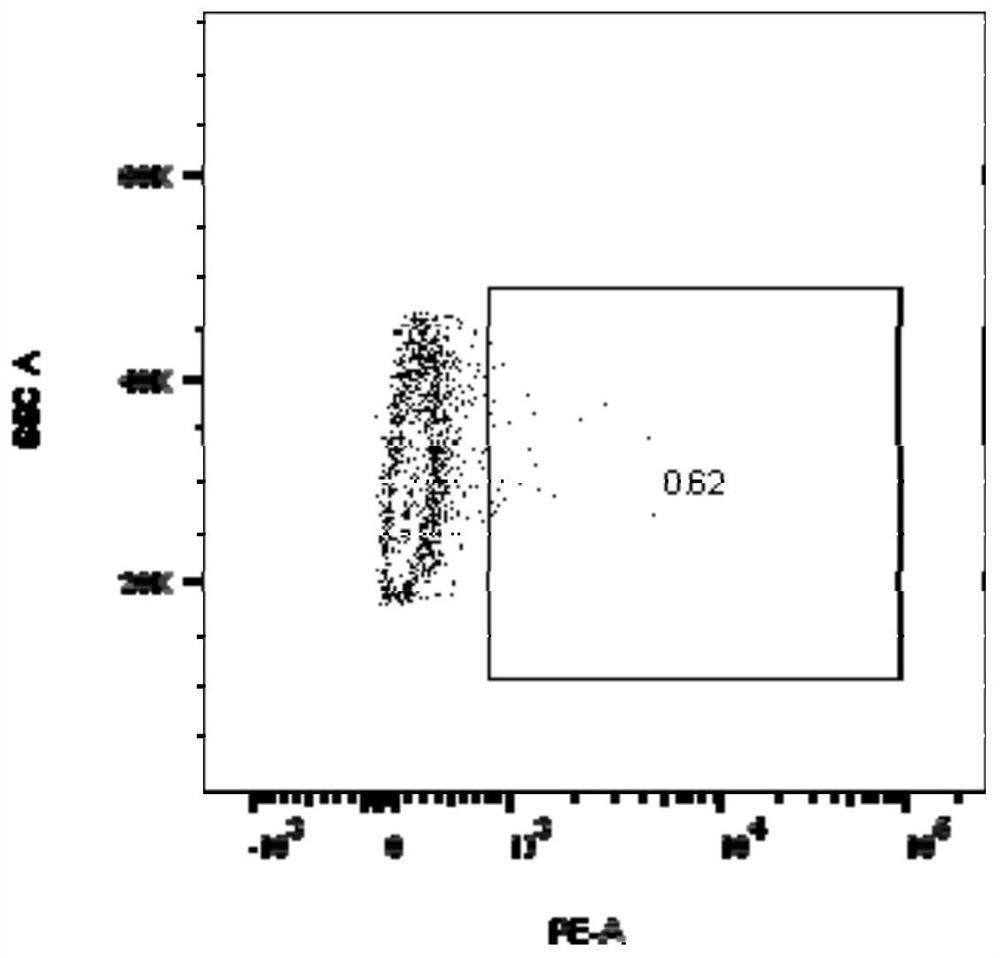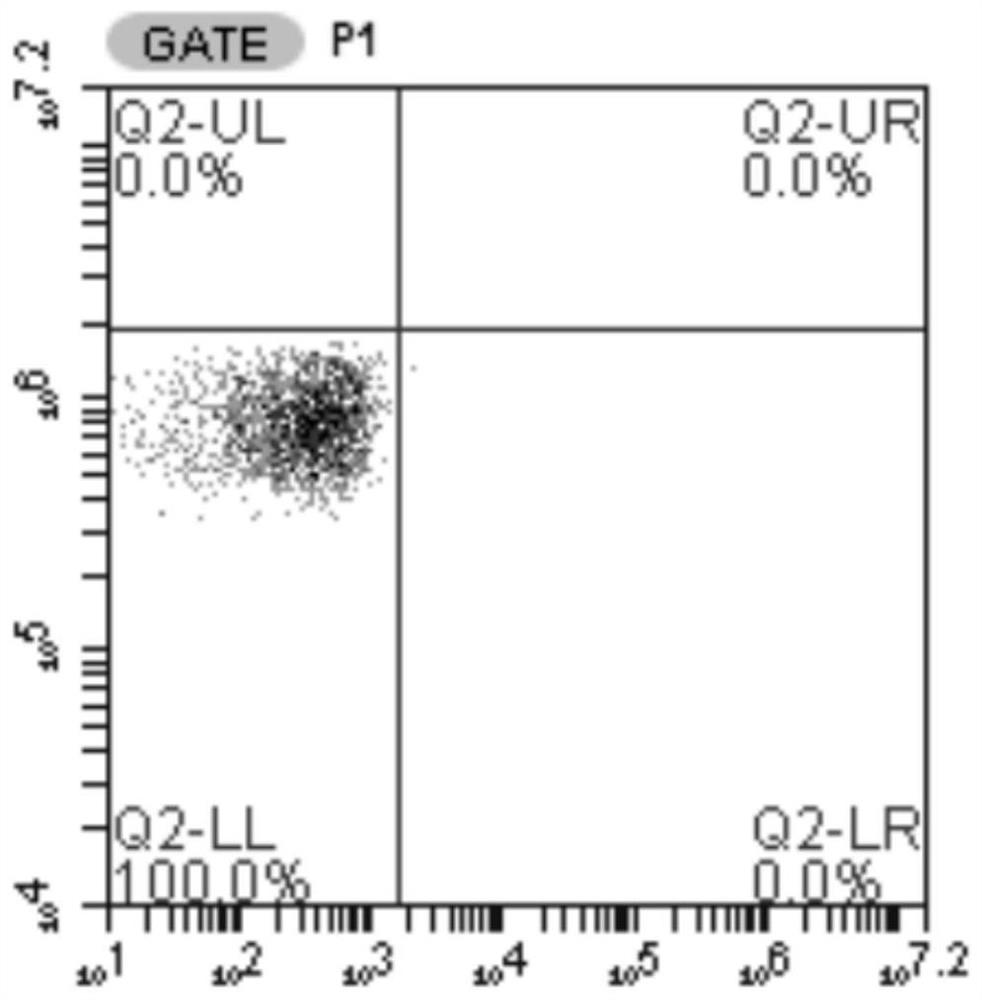Specific T cell receptor (TCR) directed at EGFR L858R gene mutation and application thereof
A cell receptor and specific technology, applied in the field of genetic engineering and tumor immunotherapy, can solve the problems of unverified therapeutic effect and lack of effective TCR.
- Summary
- Abstract
- Description
- Claims
- Application Information
AI Technical Summary
Problems solved by technology
Method used
Image
Examples
Embodiment 1
[0050] Example 1 Preparation of TCR lentivirus
[0051] The coding sequences of TCR α chain and β chain were connected by furin cleavage site, SGSG linker and F2A sequence, the α chain and β chain genes were fully synthesized, and the TCR gene was cloned into lentivirus using restriction endonucleases EcoRI and BamHI In the expression vector pCDH (purchased from SBI), a recombinant plasmid was obtained, which was capable of expressing the amino acid sequences of the TCRα chain and β chain variable region shown in sequence 6 and 8.
[0052] The recombinant plasmid was transformed into XL-10 competent cells, spread evenly on the LB solid medium plate containing ampicillin, cultured at 37°C for 12 h, picked a single colony into the LB liquid medium containing ampicillin, and incubated at 37°C. Cultivate with shaking at 220 rpm / min for 14-16 h, and extract the plasmid.
[0053] Packaging of recombinant plasmids: 293T cells in the logarithmic growth phase (purchased from the Basic...
Embodiment 2
[0054] Example 2 Preparation of TCR-T cells and analysis of TCR expression in TCR-T cells by flow cytometry
[0055] Peripheral blood from healthy volunteers was collected, and human peripheral blood mononuclear cells (PBMC) were obtained by separating human peripheral blood mononuclear cells (PBMC) using lymphocyte separation medium (Stemcell, USA, 07861). Dynabeads (Gibco, 11141D) and PBMC were mixed and incubated at room temperature for 20 min to separate activated T cells. Add 3 mL of X-Vivo 15 medium (Lonza, DL-201) to T cells, resuspend the mixture of cells and Dynabeads (Thermo, 11141D) with a pipette, and adjust the cell density to 0.5-1×10 6 cells / mL to obtain a cell suspension. Place the cell suspension at 37°C, 5% CO 2 After continuous culture in the incubator for 48 h, the cell density was adjusted to 1×10 6 individual / mL. Take out the lentivirus from the ultra-low temperature refrigerator at -80°C, thaw it quickly in a 37°C water bath, add polybrene (Santa Cru...
Embodiment 3
[0056] Example 3 Preparation of target cells
[0057] The lentiviral expression vector pCDH-A1101 overexpressing the HLA-A*1101 molecule was constructed, transiently transfected into 293T cells, and the recombinant lentivirus was prepared. The method was the same as in Example 1. The T2 cell line was transduced with the virus, and the T2 cell line expressing HLA-A*1101 was constructed according to the method in Example 2. After labeling with an antibody against HLA molecules, FACS was used to detect the expression of HLA-A*1101 on the surface of T2 cells, as shown in FIG. 2 . Figure 2A The middle is T2 cells not transfected with HLA-A*1101, Figure 2B The middle is the T2 cells transfected with HLA-A*1101, and the transfection efficiency of HLA-A*1101 is 96.6%.
PUM
 Login to View More
Login to View More Abstract
Description
Claims
Application Information
 Login to View More
Login to View More - R&D Engineer
- R&D Manager
- IP Professional
- Industry Leading Data Capabilities
- Powerful AI technology
- Patent DNA Extraction
Browse by: Latest US Patents, China's latest patents, Technical Efficacy Thesaurus, Application Domain, Technology Topic, Popular Technical Reports.
© 2024 PatSnap. All rights reserved.Legal|Privacy policy|Modern Slavery Act Transparency Statement|Sitemap|About US| Contact US: help@patsnap.com










